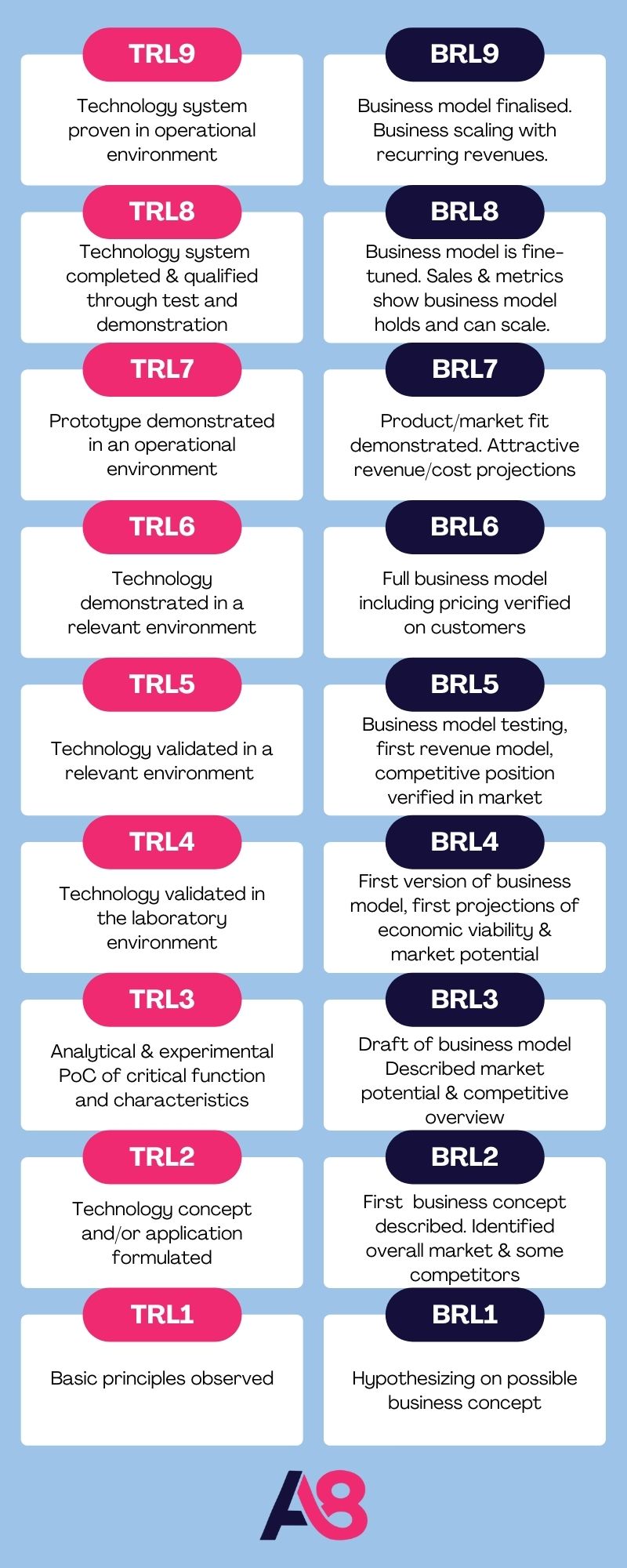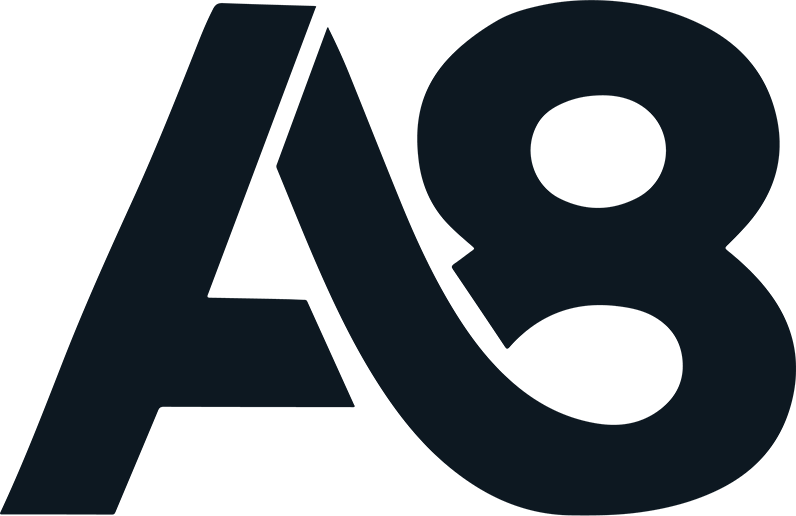Business Readiness Levels: What are they and why are they important?
Over the last few years in the innovation and R&D grant funding ecosystem, much importance has been given to Technology Readiness Levels (TRL). First developed by NASA in the 1970’s, the TRL scale is a unified method to understanding technological maturity. Now, funding bodies are shifting their focus from funding technical innovation towards investing in the development of business and market readiness. Because of this, there is an increased interest in a different Innovation Readiness scale: Business Readiness Levels (BRL).
BRL of an innovation refers to the maturity of the business considerations developed alongside the technical development. This is a valuable assessment tool for innovators seeking to establish a technology that is financially viable and commercially feasible. So, while TRL defines whether a technology is ready to go to market, BRL captures whether the business based on such a technology is ready to launch. Therefore, TRL and BRL go hand in hand, are complementary to each other and run in parallel when considering the market readiness of an innovation.
Business readiness is concerned with the maturity of efforts in several commercial functions. For example, the development of a business concept, model and strategy, team and management structure and awareness of competitors. It also considers financial aspects. These include the amount of capital, cashflow, scalability and sustainability over time.
Knowing the business readiness level of your innovation and monitoring how it changes over time is very important because it allows you to:
- Assess maturity, objectively monitor the rate of progress and plan the next steps;
- Identify the missing skills and resources required to reach the next level;
- Evaluate and manage the level of risk for potential investors and funding bodies.

Where does Business Readiness fit within the wider scope of Innovation Readiness?
What started with TRL has now evolved into a number of distinct models that each measure different aspects of Innovation Readiness. These include several scales and tools for assessing Market readiness, Commercial readiness, Manufacturing readiness, Investment readiness, and so on. However, without a standardized system of assessing the different maturity levels of your innovation, things can get very confusing very quickly.
KTH Innovation is the innovation arm of the Swedish Royal Institute of Technology. This institute has set out to promote standardization and metrics in innovation development. To accomplish this, they have developed a much-needed and very useful framework for Innovation Readiness Level. This is built around six key focus areas.
- Customer Readiness Level (CRL) – Confirm market need and interest from target customers
- Technology Readiness Level (TRL) – Develop, test and demonstrate the technology
- Business Readiness Level (BRL) – Validate the business model and the business potential
- IPR Readiness Level (IPRL) – Assess and develop suitable intellectual property (IP) protection
- Team Readiness Level (TMRL) – Build, develop and align the required team
- Funding Readiness Level (FRL) – Prepare for investment and secure funding
Use of these scales allows for an objective assessment of an idea’s current status, because they provide a valuable roadmap for guiding progress in every dimension of innovation development. This process starts from the earliest conceptualisation of the idea and continues throughout the development and validation of the innovation.
The 9 Business Readiness Levels: From idea to business ready to launch
The six Innovation Readiness scales, including BRL, are composed of nine levels. Each of the levels carries a set of associated milestones and actions that must be accomplished to move on to the next level. Here, we consider Business Readiness Levels in parallel with the TRL scale, as adapted from the KTH Innovation model. This can provide a practical overview of how both concepts relate to one other.

Still unsure about the BRL of your technology, and how to improve it?
If you’re an academic, determining and improving the maturity of the business proposition originating from your research may not come natural. Worry not, we’re here to help. Our expertise in developing businesses originating from research allows us to give you the required insights to navigate this easily. We can help you assess the current Business Readiness Level of your innovation, and discuss the practical steps & funding opportunities to move forward to the next stage on the road to market. Talk to us to book a free consultation, and visit our cases page to learn more about our successful projects.
